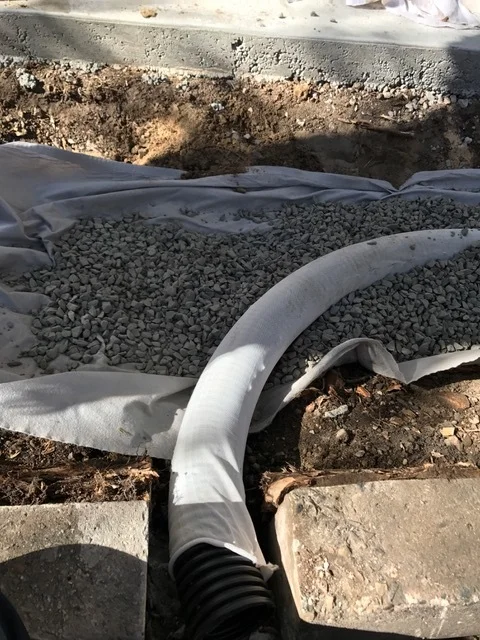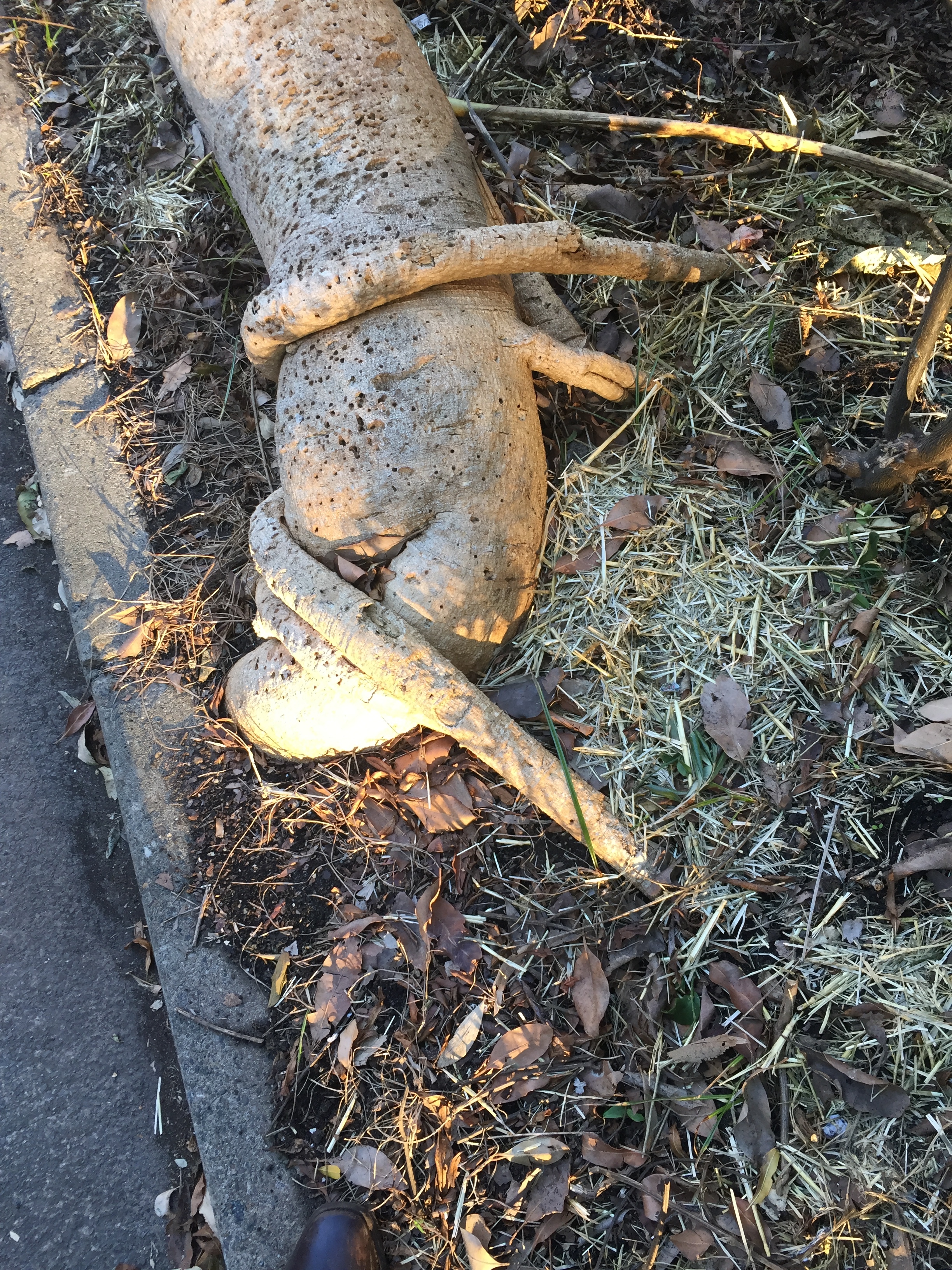• The cloth keeps soil out of the pipe. The pipe is full of holes. The pipe rests on gravel. When the rain falls on the roof and footpath the water leaks out into the gravel and soil.
This is so easy for any of us to do.
You’ll love it.
Sydney City Council and the Chippendale community keep rainwater where it falls.
Rain from roofs and footpaths is directed below the road verge where it is absorbed to feed the roots of the plants and trees there. Instead of being sent off like so much naughty water the rain is respected, kept and the result is healthy, flourishing plants and trees.
• In 2017 Sydney City Council and the Chippendale community built a road verge and made it self-irrigating using ‘leaky’ agricultural drainage pipe that directs rain from footpaths below the soil to the roots of the plants and trees
• Look at the child helping to lay out the leaky agricultural drain pipe. It’s that easy.
In the last weeks of this July 2019, Sydney Council workers have made another self-irrigating road garden at Pine Street, a few blocks from this one in Shepherd Street.
• Here, the rain that becomes water from the adjoining site and from the footpath is being kept below ground by the leaky pipe. The next step is to put soil over then plant the plants
• In Chippendale we love and respect and harvest and keep our rainwater; once built the pipes continue underground watering when it rains for the next 30 or more years.
• Soil being placed over the leaky pipe. Good work being done quietly out of sight and producing healthy, well-irrigated plants and trees.
How trees ‘see’ water
• Paw paw tree roots crossing back over tree trunk to find water in the verge garden
Just around the corner from these works in Pine street we humans may see how trees ‘see’ water.
The paw paw tree in our road verge garden in Myrtle Street is denied water by the concrete kerb which has no cuts in it to direct water to the garden and, instead, sends water away to Sydney Harbour.
But our Myrtle Street verge garden has water in it, directed and kept there by similar drainage to that now being placed in Pine Street.
These photos show:
tree roots crossing over the paw paw trunk to grow down to the soil on the other side to find water;
the tree roots also provide structural support for the tree which is tall and leans away to one side where it seeks sun that’s mostly taken up by a nearby Brushbox tree.
• Very determined tree roots and nearby Kaffir Lime which is being out-competed by the paw paw tree
Here’s a simple, cheap solution we began in 2008. It cost us less than $300 to do about 20 houses. Each year we keep about 4 million litres of rain where it falls in our road gardens - or about 40 million litres of water by 2020.
When we keep rain water where it falls we may cool our streets by growing trees and plants more quickly and to greater heights and canopies.
Let the drops stay where they fall.










